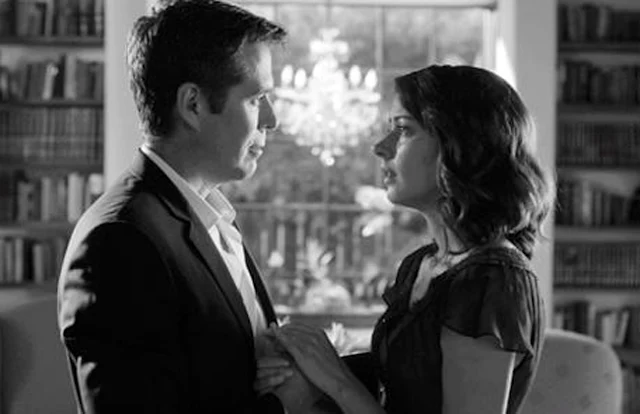 |
| Tom Hardy in Locke |
A man driving on the highway alone at night, talking to people on the car phone. It's the stuff of which radio dramas like the 1943 Sorry, Wrong Number were made -- or might have been, if there had been car phones in the 1940s, the peak era of radio drama. Sorry, Wrong Number was "opened up" to show other characters than the woman on the phone when it was filmed by Anatole Litvak in 1948, but Steven Knight's Locke remains alone in the car with its title character, played by Tom Hardy in a performance that leaves no doubt that he's one of our best actors. But the actors whose voices are heard in the film, including Olivia Colman, Ruth Wilson, Andrew Scott, and Tom Holland, are just as compelling in their performances. The chief objection made by critics is that Locke is basically a "gimmick" film, that there's no reason why Knight shouldn't have shown the people on the other end of the line -- or whatever passes for "line" in the era of mobile phones. It's a tour de force that keeps the camera trained on Locke for the film's entire 85 minutes, with only occasional cuts to the surrounding traffic, and it's an added departure from the expected to cast an actor known mainly for his work in action films in a role that puts him in one seat for the whole movie. But I think Knight and Hardy make it work splendidly, focusing our attention on the character of Ivan Locke, and the decision he has made to abandon both the important construction project he supervises and the family gathering to watch a big soccer match on TV in order to drive to where a woman with whom he had a one-night stand is giving birth to his child. Knight hasn't really solved all the problems of motivation that he should have: The decision to have Locke deliver a series of monologues directed at his dead father, who abandoned him and his mother, feels contrived. But there's real drama in the conversations with Donal (Scott), the inexperienced and rather feckless man he has left in charge of the crucial concrete pour, with the hysterical Bethan (Colman), who is giving birth to their child, and with his wife, Katrina (Wilson), to whom he is just now confessing that he slept with Bethan. Best of all, Knight has the good sense not to provide closure to Locke's story: When we leave him, he has a marriage in ruins and a baby to help support, and he's been fired from his job. But because we have spent so much time face to face with Locke, and because Hardy has so deftly created the character, it's easy to sense that he's capable of surmounting these problems.








